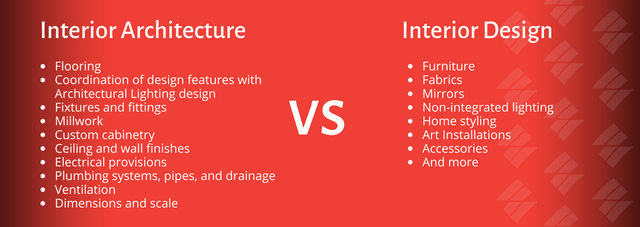Stylish Rustic Home Design for Rural Retreats
Stylish Rustic Home Design for Rural Retreats
Blog Article
Designing Your Dream Area: The Impact of Interior Design and Home Architect on Home Looks
The magic of developing a desire home lies not just in building prowess but additionally in the delicate creativity of indoor design. These two disciplines intertwine, with architecture providing the skeletal structure while interior design breathes life into the space with structure, furnishings, and color choice.
The Crossway of Interior Design and Design: Greater Than Meets the Eye
Although lots of people believe that indoor style and style are two separate self-controls, a closer assessment exposes a remarkable crossway in between both. Architecture lays the structure, offering the covering within which interior layout runs. Nevertheless, the kind and feature of an area are not entirely determined by its building design. Interior Design plays a crucial duty in finishing a structure and boosting's building components, concentrating on the option and presentation of indoor products such as furnishings, fixtures, and finishes. It is the interplay of these two techniques that brings a room to life, transforming it from a simple structural entity into an alternative, lived experience. This symbiotic relationship underscores the value of incorporating architectural principles into interior decoration, and vice versa, to accomplish a harmonious and cosmetically pleasing atmosphere.
Utilizing the Power of Color Styles and Textures in Home Design
While the framework of a home may be the canvas, it is eventually making use of shades and textures within interior decoration that brings the vision to life. The critical application of shades can establish the state of mind, develop consistency, and even influence the perceived dimension of a room. Neutral tones provide a sense of calmness and spaciousness, while bold shades can attract and energize emphasis. In a similar way, appearances play a critical function in adding depth and character to a room. Harsh textures, like raw timber or block, supply rustic beauty, while smooth surface areas, like marble, radiate style. By recognizing the mental influence of colors and tactile allure of appearances, one can successfully change a house right into a visually engaging and psychologically interesting home.

The Role of Furniture in Defining Room and Way Of Life
Furniture serves as a defining aspect in indoor design, affecting both area and lifestyle. The choice of furniture can substantially affect the assumption of room, with bigger items developing an impression of grandeur, while smaller, minimalist layouts can make a space show up large. Thus, furnishings selection plays a critical role in defining and personalizing room, with each piece serving as a testimony to the property owner's distinct identification.

Architectural Considerations for Personalized Spaces
Past the prominent duty of furnishings, architectural factors to consider also play an essential component in customizing spaces. The layout, style, and framework of a home can dramatically impact its overall aesthetic, capability, and the occupants' comfort. Recognizing the home's building elements, such as the shapes and size of spaces, the positioning of doors and windows, and the type of products made use of, can assist one customize their area to their way of life and choices. Building components like arcs, fire places, stairs, and columns can serve as the focal factors Recommended Reading of an area. Balancing these building information with appropriate furnishings, color design, and lighting can develop a unified and tailored setting. Design, for that reason, is a crucial consider designing one's desire area.
The Emotional Effect of Aesthetically Pleasing Spaces
The impact of aesthetically pleasing areas on human psychology is extensive. These atmospheres not just appeal to the senses however likewise add to a person's total wellness. They can promote creative thinking, cause relaxation, and even influence state of mind. Textures, colors, and patterns can evoke psychological reactions, while the format and lighting Read Full Article can influence habits and communications. A properly designed room, with its mindful equilibrium of visual appeals and functionality, can promote a sense of harmony, advertising positivity and efficiency. Alternatively, inadequately created areas can create feelings of pain or stress and anxiety. Indoor layout and style are not merely regarding developing aesthetically attractive spaces, however additionally about cultivating settings that improve psychological health and contentment.

Verdict
In final thought, developing your desire area is a nuanced process that stabilizes the architectural aspects of style with the aesthetic options of indoor style. By meticulously selecting colors, textures, and furniture, you can craft rooms that not only look beautiful yet additionally functionally serve your way of life. Inevitably, the effective combination of these disciplines promotes well-being, sparks creative thinking, and fosters a sense of individual identity within the home.
Designing Your Desire Area: The Influence of Interior Design and Home Architect on Home Looks Countryside Homes interior design.
The magic of designing a desire home exists not only in building prowess but likewise in the fragile artistry of indoor design. These 2 techniques link, with architecture providing the skeletal structure while indoor style takes a breath life right into the check it out room with furnishings, structure, and shade option.Furnishings offers as a specifying component in interior layout, influencing both area and lifestyle.In verdict, creating your desire area is a nuanced process that stabilizes the structural components of architecture with the visual choices of indoor layout.
Report this page